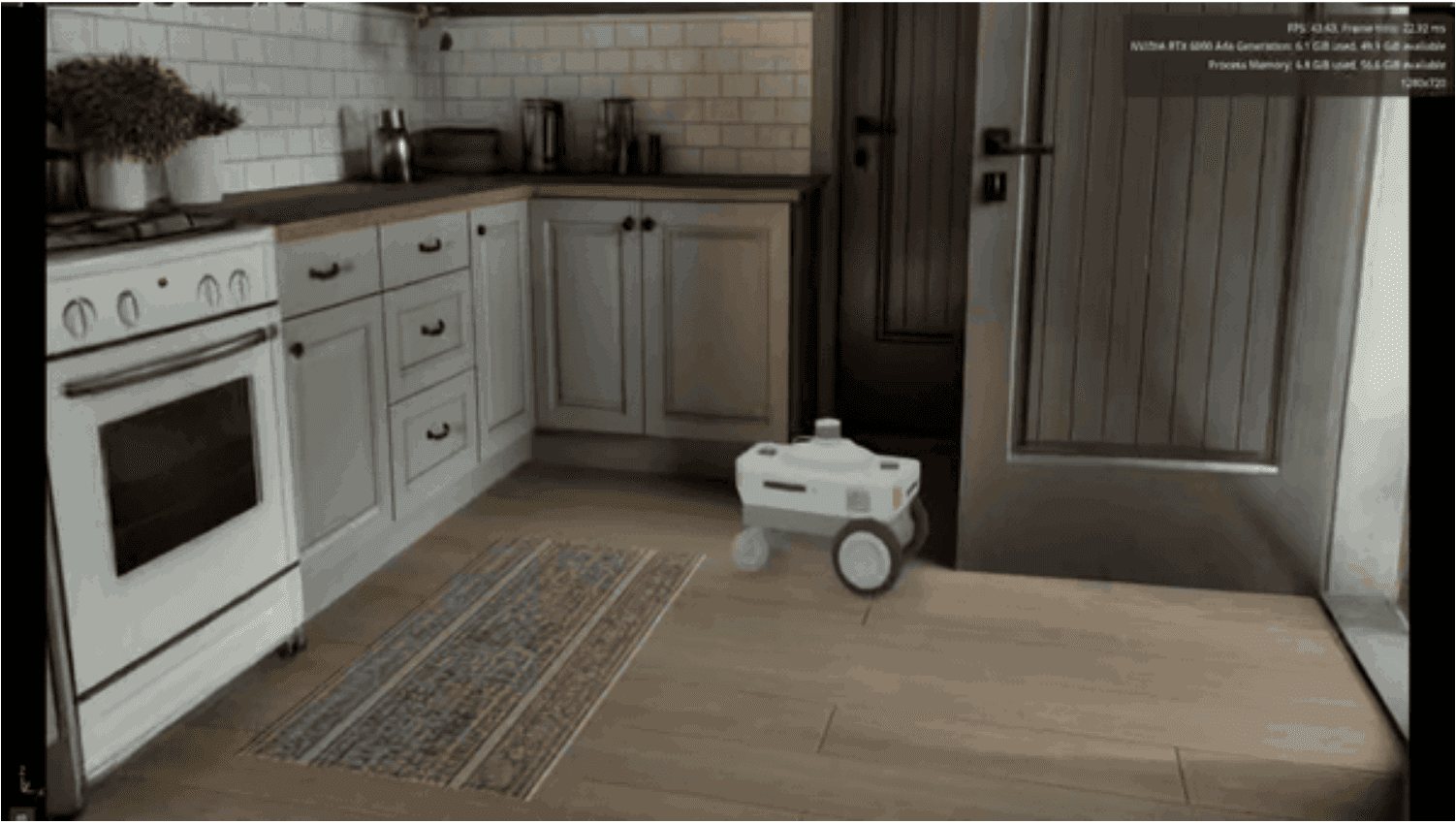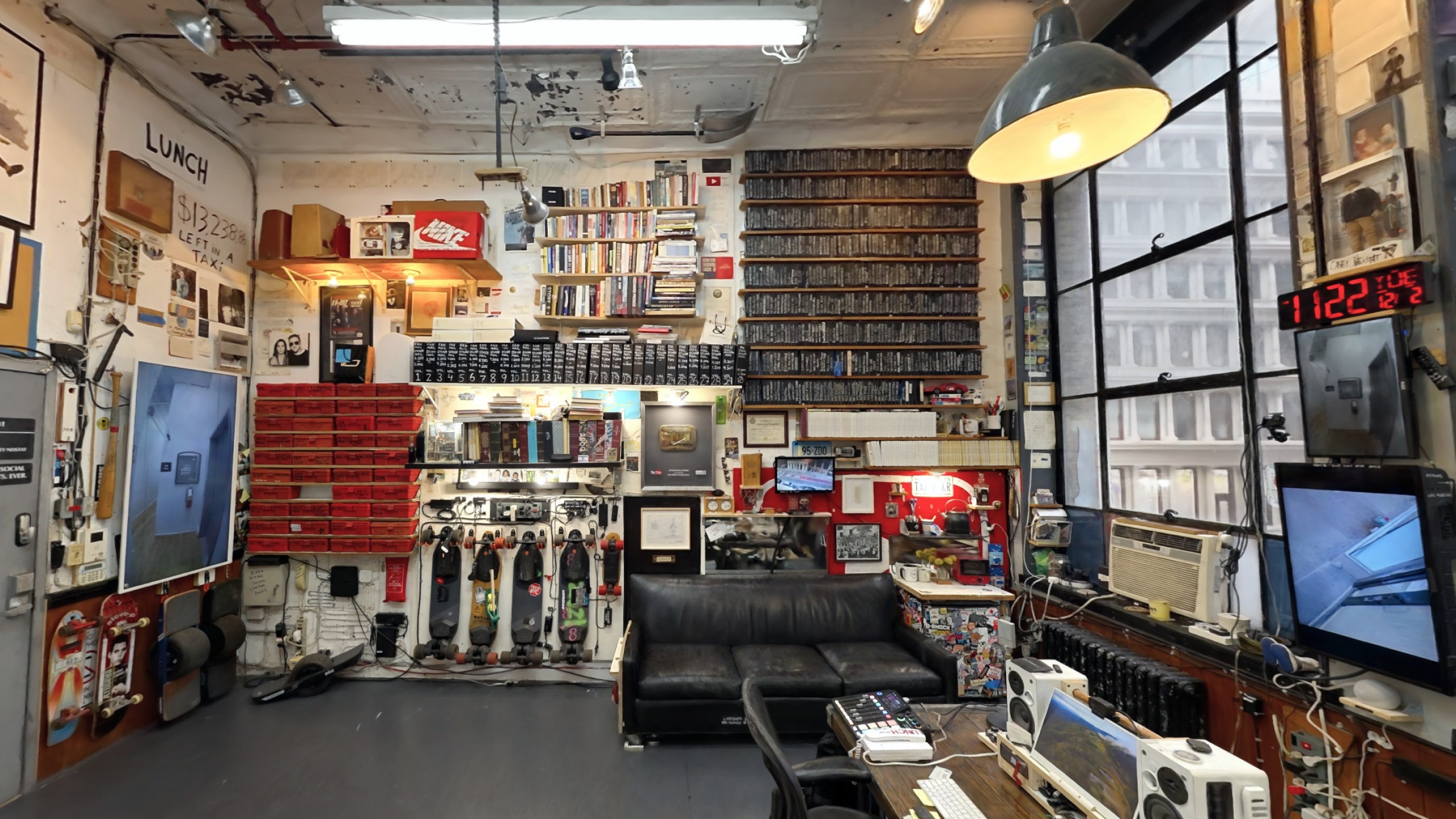

Drew Moffitt
Aug 19, 2025
In the AEC field, project designs and mockups are everywhere. But what if you could transform those glossy, idealized scenes into realistic and interactive 3D replicas of the real world without manual modeling or excessive time billed?
That’s what I did, as part of Garver’s Innovation Incubator, for a memorial project contracted by the Arkansas Department of Transportation, or ARDOT. And to my knowledge, this may be the first time where a Radiance Field visualization has been used with a proposed design to alter that design before construction even began.
The memorial, designed in-house, was slated to be placed in a grassy area of the ARDOT campus, surrounded by trees. The initial imagery was not very descriptive by way of lacking context. It features a few people walking on asphalt with a concrete memorial surrounded by white space and blue sky. While this model represented the memorial well, it did not paint a contextual picture of the memorial’s location or placement on ARDOT’s campus.
Moving Beyond Renders
Traditionally, project renderings are the sole visualization element for proposed construction. While valuable, I see an opportunity to move beyond the render and provide clients with even more tools to visualize the project in real time.
The difference here is that in renderings, you never have actual trees – you'd have a representation of your trees. You’d never have cars; you’d have a representation of cars. Through combining AI-powered tools like Neural Radiance Fields and Gaussian splats, I was able to provide the client with the real cars, the real trees – and even though I dislike the phrase, a “digital twin” so to speak.
After I presented the model to the client, the original memorial design was immediately changed. Seeing the placement on a real-life rending – with actual trees, traffic, and terrain – instantly changed the design. Preferring a more centered design, the memorial’s placement was corrected before any ground was ever broken. That small change made a big difference and was only possible because ARDOT Director Jared Wiley could see the space, not just imagine it. In Wiley’s own words, it gave him a way to visualize the project without a “trained mind’s eye.”
A New Kind of Seeing
Part of my job at Garver, a national engineering firm, is to innovate and, through innovation, bring a greater understanding of the final project based on design options – including placement.
In this particular use case, utilizing NeRFs and Gaussian Splats gives me the power to relay the real world into a digital environment without manual modeling. At this tech’s core, it enables anybody with almost any photo-based technology to capture, process, and represent the world.
Creating A Vision
To capture the site of the project, we flew a DJI Mavic 3 drone and captured 4k video, not still photographs, so we were able to fly around the site with the drone and not have to pause for still photographs, making the capture faster.
Using some custom python scripting, the video was broken into individual frames and processed through Postshot. From there, I cleaned up the model with SuperSplat. Mostly, I removed a lot of sky way outside the project site, some floaters in the scene, and then scaled the memorial based on wooden stakes that the department had already installed where they originally wanted the memorial to go.
Using PlayCanvas, I was able to create a shareable link of the rendered site with the memorial in place. The revised digital model, which the client could review interactively, was instrumental in shifting the final placement. Rather than relying on assumptions or abstract visuals, the client was able to “walk through” a digital version of the actual project site – complete with real trees, buildings, and landscaping. That level of realism brought a new layer of clarity to the decision-making process that traditional renderings couldn’t achieve. In doing so, this technique didn’t just transform the decision-making process of this project, it demonstrated how Radiance Fields can reshape the early design phase in the AEC industry by offering site-specific accuracy without extensive manual modeling. The memorial’s final placement was exactly where the digital model had been revised to show it.
Visualizing Future Projects
The possibilities for expanding this technology in the AEC field are endless. Simply put, they are miles more accessible and accurate than traditional renderings. Your clients or other stakeholders no longer have to have a trained mind’s eye. Instead, they can easily see their design, in their space.
Beyond accessibility, these tools have the power to drive costs down and efficiency up. Instead of spending tens of hours trying to render out a man-made scene, you can instead send a drone up, capture the scene in a few minutes, bring that back to the rendering software, and produce that world. All in an afternoon.
More and more, software will integrate the ability to go out and capture with a drone or even an iPhone, then bring your scene to life. Stakeholders and clients are going to come to expect the ability to visualize projects in the actual finished space.
For now, adaptation is still emergent. But in my view, utilizing these tools empowers the designer and client to make the best decision and allows us to remain in-line with technological advancements.

Written by Drew Moffitt
Drew Moffitt is the Geospatial Solutions Leader at Garver, an employee-owned engineering, planning, and environmental services firm focused on aviation, transportation, buildings, federal, water and wastewater services; surveying; advisory services; and construction engineering and inspection. In the top 100 of Engineering News-Record's Top 500 Design Firms list, with more than 1,300 employees, Garver has a people-first culture that drives innovative, client-first service and is consistently recognized as a best firm to work for by Zweig Group.









